Radishes are considered a good option among indoor growers for a few reasons, including their ease of cultivation and relatively less complicated growing requirements. Once you have a suitable indoor growing space and adequate lighting, you are on your way to having a successful indoor growing radishes experience. If you are a beginner grower looking for how to grow radishes indoors, this blog is for you.
Table of Contents
Best Conditions For Growing Radishes
The first step to growing radishes indoors is understanding the growth requirements of the plants, including soil testing, lighting adjustment, temperature, and humidity.
Soil & pH Level
Radishes are generally low-maintenance regarding soil requirements, but like most plants, they have their preferences. The ideal soil for growing radishes is well-drained, loamy soil. This type of soil is excellent at retaining moisture but also allows excess water to drain away, preventing root rot. You can go for a quality potting mix sold in stores or make your own from scratch.
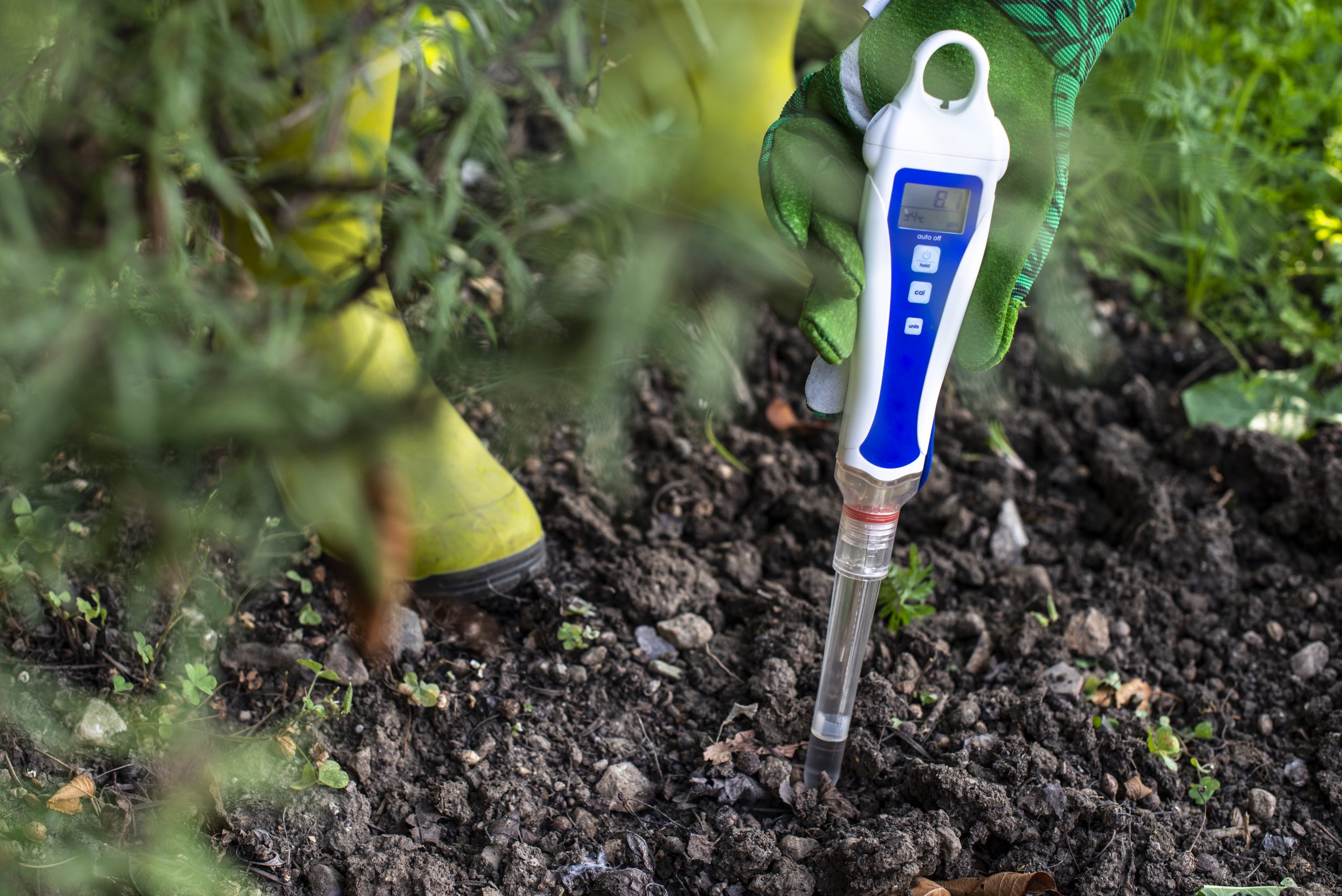
As for the pH level, radishes prefer a slightly acidic to neutral soil pH range of 6.0 to 7.0. Within this range, radishes do a better job of absorbing essential nutrients from the soil, leading to healthier growth.
Lighting
Radishes require minimal sunlight compared to fruiting crops like peppers and tomatoes. However, they need five to six hours of daylight to grow optimally. Therefore, they are pretty tolerant of shades. You can place them on your windowsill. In the absence of natural sunlight, you can adopt an effective LED grow light that can deliver the equivalent of over six hours of direct sunlight.
Temperature
As a cool-season root crop, radishes grow best in short days. The seed germination temperature ranges between 40-95 oF while the optimum seed germination temperature ranges between 55-85 oF. Anything lower or higher causes slow germination. Regarding growth, the best growth temperature for high-quality radish plants is 50-70 oF, but you can also grow them in the 40-90 oF temperature range. If you are growing radishes indoors by equipping them with a grow room, you may want to know the ideal grow room temp and humidity chart.
Planting Equipment
In addition to your viable radish seeds, you need other growing equipment, including planting pots or containers with drainage holes, a garden fork, a watering can, and a misting spray (not compulsory). With everything prepared, we can learn how to grow radishes in pots and other containers.
Step-by-step Guide on How to Grow Radishes
Radish plants grow optimally when sown right into the soil compared to when transplanted. So, instead of planting in seed starting trays, sow the seeds directly into the pots. You can follow the steps below for successful indoor radish growing.
Step 1: Decide the Right Time to Plant
Radishes are quite versatile and can be grown both in the spring and fall. For spring radishes, start planting 4-6 weeks before the last expected frost. Winter radishes require a longer growing period, so plant them about 8-10 weeks before the first expected frost in fall. Timing is crucial to avoid overly pungent radishes.
Step 2: Select the Radish Type
Choose the type of radish you'd like to grow based on your culinary needs and the growing conditions. For quicker harvests, consider spring radishes like Cherry Belle and French Breakfast. If you're after something more robust and can wait a bit, go for winter varieties like Daikon or Black Spanish.
Step 3: Prepare the Soil
For thriving radishes, fill your planting pots or containers with soil in advance. The soil should be loamy and well-drained. Till it up to a depth of about 12 inches to make sure the radish roots can easily penetrate the soil. Remove any rocks, sticks, or debris that could inhibit growth.
Step 4: Test and Adjust Soil pH
A soil pH of 6.0-7.0 is ideal for radishes. If the pH levels are off, you can add lime to increase alkalinity or sulfur to increase acidity. This ensures that your radishes can absorb all the essential nutrients from the soil for optimum growth.
Step 5: Sow the Seeds
Sprinkle your viable radish seeds (3 to 5) into the soil in your container, and use a garden fork to gently pull the soil 1/2 or 1/4 inch over the seeds.
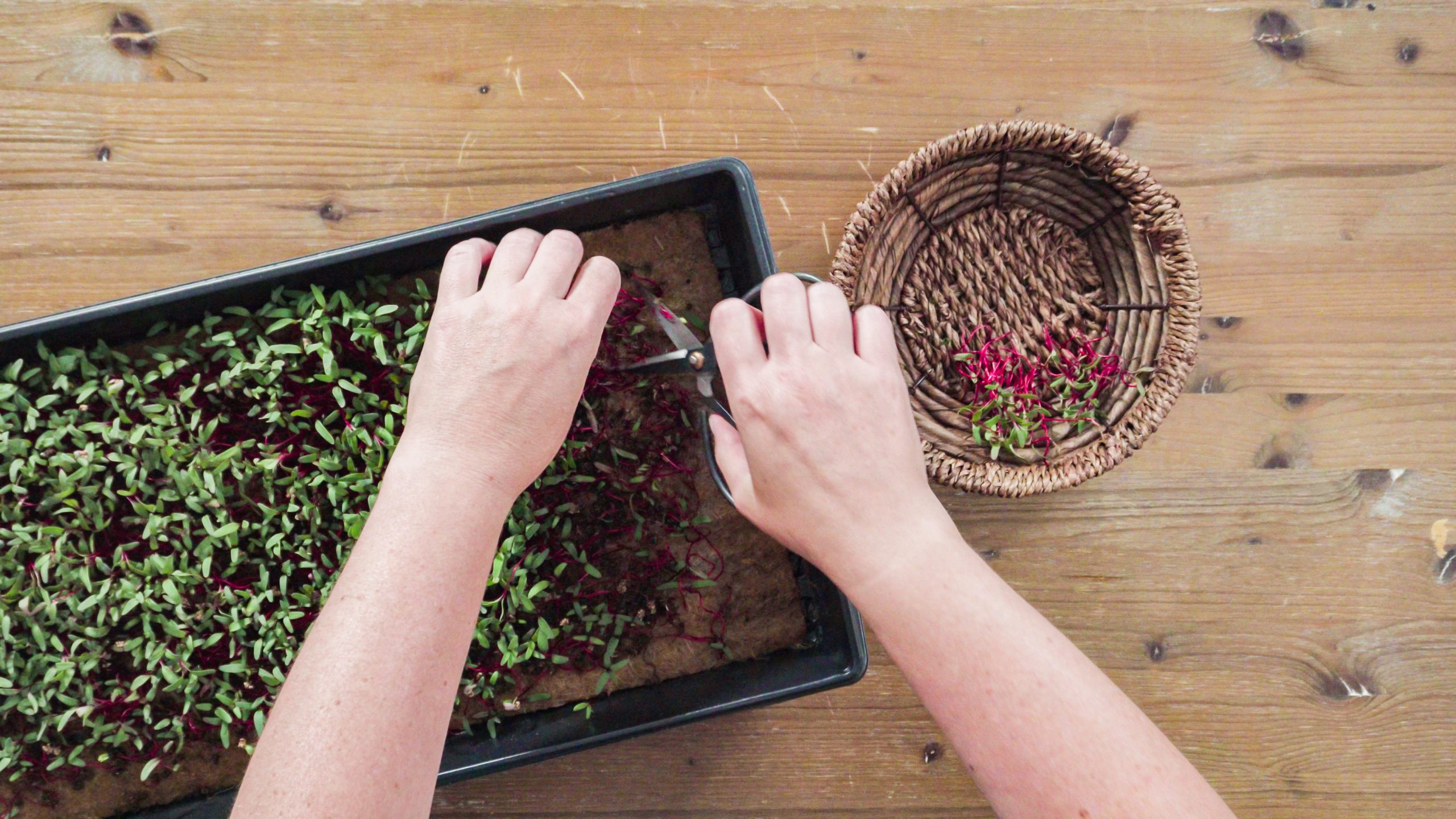
Step 6: Water Radishes Properly
Right after planting, water the seeds generously to help them germinate. It is best to regularly and consistently water your radish plants to keep the soil and plants moist. Radishes do not like overly wet or dry soil and need 1 inch (2.5 cm) of water per week is sufficient. Keep the soil moist, but not completely wet.
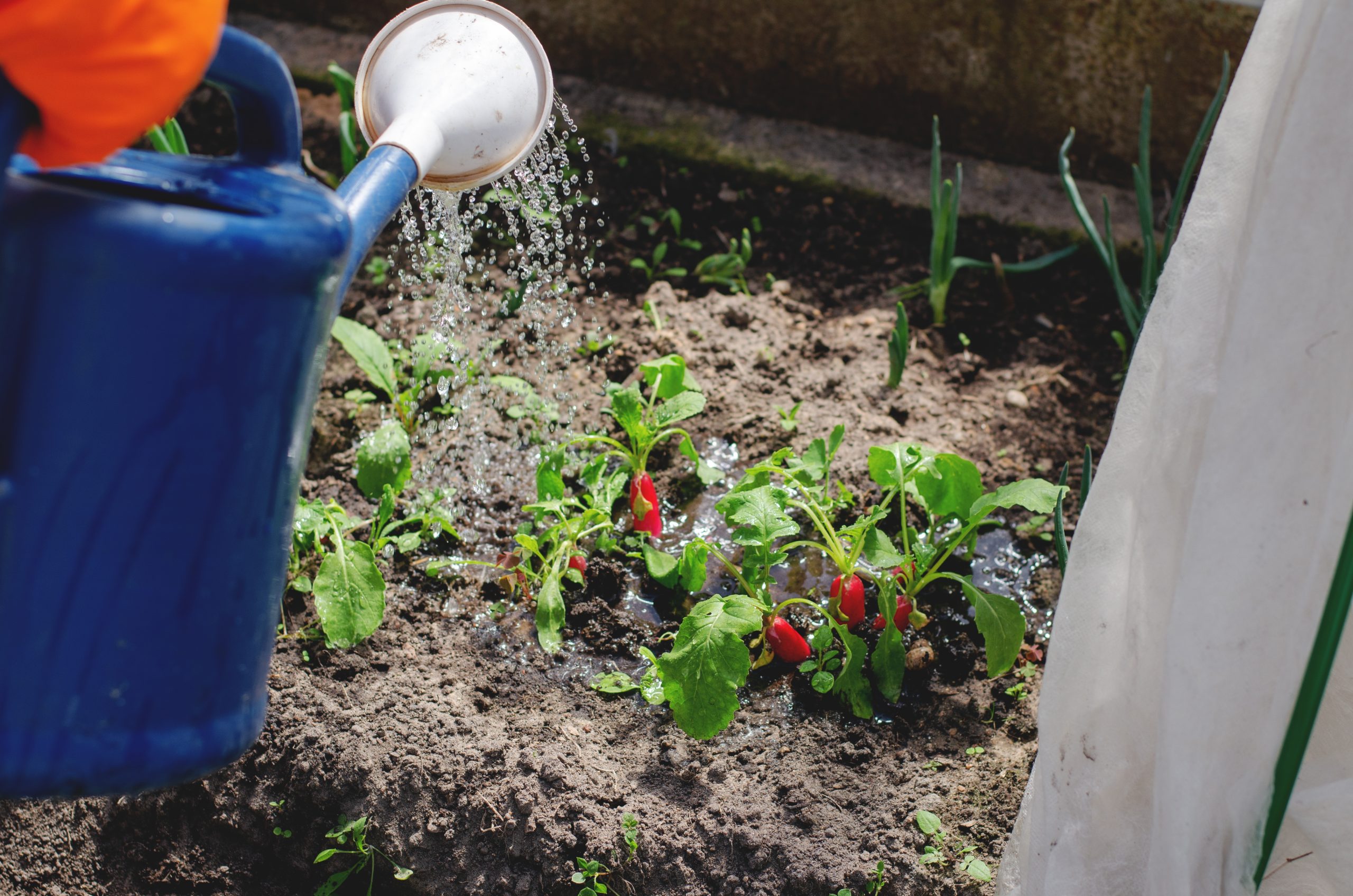
Step 7: Thin the Seedlings
Radishes that are too closely packed tend to produce disappointing results, often yielding small, withered, and unappetizing roots. Therefore, once the seedlings are about 2 inches tall, somewhere after 3-10 days after planting the seeds, it's time to thin them out.
Remove the smaller seedlings to allow the stronger ones to thrive, maintaining a spacing of about 2-3 inches between each plant. These trimmings are actually edible and make a tasty addition to salads. Alternatively, if you manage to uproot the small plants without damaging the roots, leaves, or stems, you can replant them. These transplanted seedlings may show some initial signs of stress but generally recover with time.
Step 8: Harvest Time
Harvesting is the most rewarding part. Spring radishes are usually ready within 20-30 days, or three to five weeks after planting, whereas winter radishes can take 50-60 days. To check for readiness, gently remove the soil around the top of the radish. If it looks full and round, it’s time to pull it out!
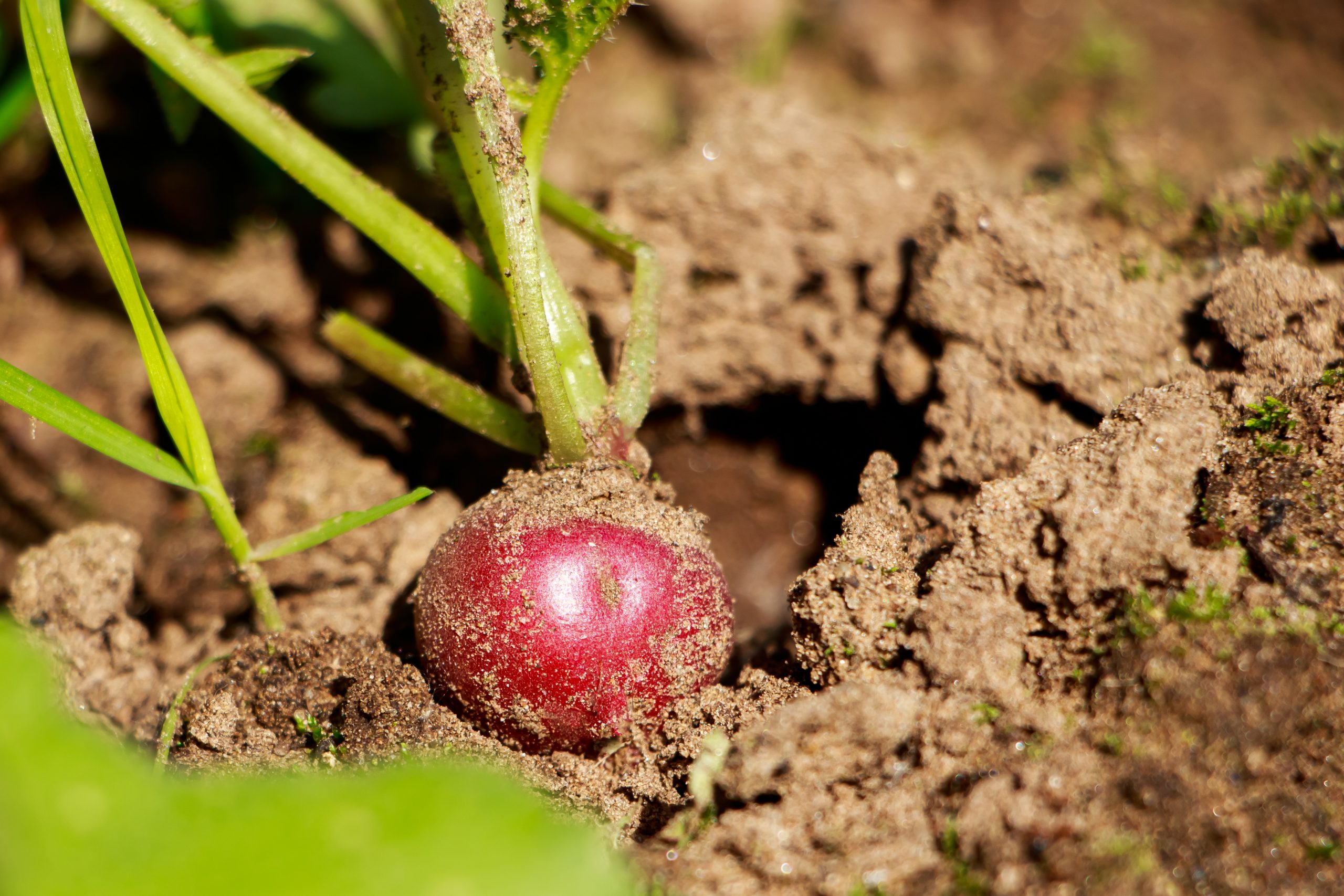
Once harvested, spring radishes are best when eaten fresh, but they can also be stored in the fridge for up to two weeks after you clean up the roots. Winter radishes can last for a few months if stored in a cool, dry place like a root cellar.
How Long Do Radishes Take To Grow
In general, a 3-5 weeks of growth stage is what you should expect for harvesting, however, how long it takes a radish plant to attain full maturity varies among the cultivars. For example, the early maturing cultivars take 20-40 days to mature after planting. Similarly, varieties like the French Breakfast and Cherry Belle take 23-30 days to harvest. However, Asian radishes such as Daikon take longer–60-70 days in most cases.
Leaving matured radishes unharvested leads to woody, peppery, and cracked plants. It is best to harvest them when the leaves are young and green.
Conclusion
Growing radishes indoors can be an enjoyable experience if properly done. Besides improving your indoor growing skills and experience, you also get a year-round supply of great-tasting, healthy, homegrown radishes for your consumption. Growing radishes indoors requires intermediate care. Besides meeting the growth requirements, you will have to sprout, thin, and water to nurture your radish plants to full maturity. Once these are done, all you have to do is watch your radish plants bloom.
FAQs about Growing Radishes
- Are radishes hard to grow?
No, radishes are generally considered one of the easiest vegetables to grow, making them perfect for beginner gardeners. They germinate quickly and have a short growing season.
- Do radishes need sunlight to grow?
Yes, radishes require a good amount of sunlight to grow properly. They thrive best with at least 6-8 hours of direct sunlight per day, although they can tolerate partial shade.
- Do I need to fertilize my radishes?
Generally, radishes do well without much fertilization, especially if you've prepared the soil well. However, if your soil is not rich in nutrients, and the plant is having some unpleasant symptoms, a balanced fertilizer applied a couple of weeks after planting can be beneficial.
- What are some common pests and diseases that affect radishes?
Radishes are susceptible to root maggots, flea beetles, and aphids. Diseases like downy mildew and root rot can also be issues if the plants are grown in poor conditions.




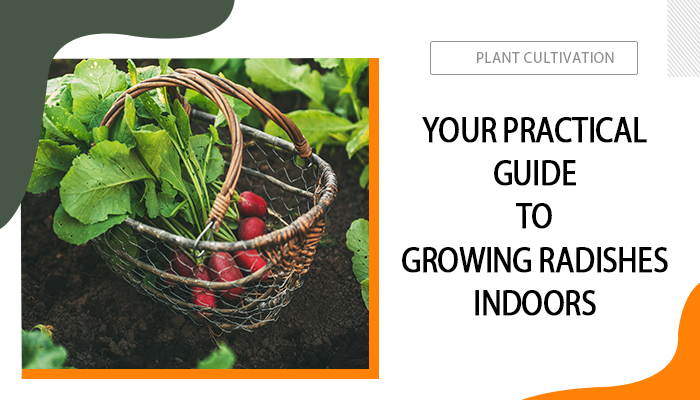


Wish I had some extra space to grow some vegetables is the house. Would definitely to this and grow some radishes.